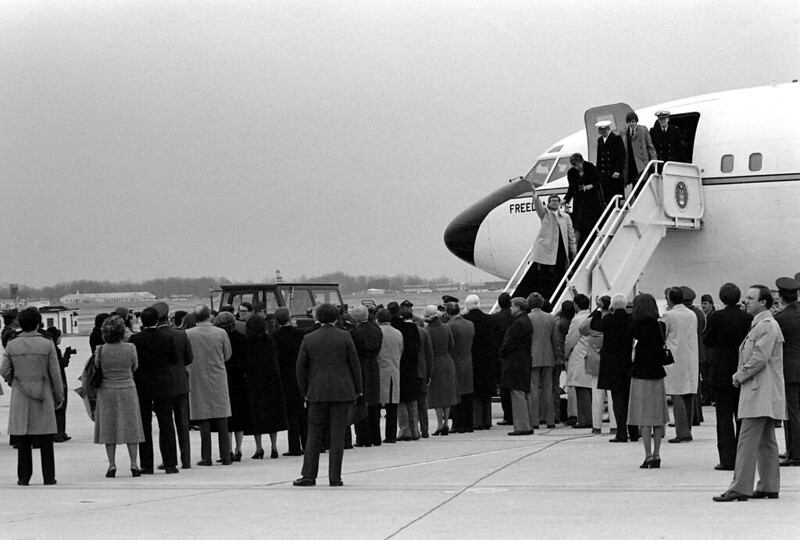Iran Hostage Crisis
The Iran Hostage Crisis: A Defining Moment in U.S.-Iran Relations
The Iran Hostage Crisis was one of the most significant events in U.S. history, marking a major shift in American foreign policy and shaping the dynamics of U.S.-Iran relations for decades to come. Lasting from November 4, 1979, to January 20, 1981, this crisis not only impacted U.S. diplomacy but also had a lasting effect on the political landscape of both nations. This article delves into the background, key events, and consequences of the Iran Hostage Crisis, examining its profound implications on international relations and U.S. domestic politics.

Background: Political Context Leading to the Crisis
The seeds of the Iran Hostage Crisis were sown during the Iranian Revolution of 1979, which dramatically changed the political structure of Iran. The Shah of Iran, Mohammad Reza Pahlavi, who had been a U.S. ally for decades, was overthrown by a revolution led by Ayatollah Ruhollah Khomeini. The revolutionaries, particularly the young militants, viewed the United States as a key supporter of the Shah, who they accused of exploiting Iran’s resources and oppressing its people.
You may also like:- Veterans Day
- Day of the Dead
- International Men’s Day
- Black Friday
- All Saints’ Day
- No Shave November
- Native American Heritage Month
- Movember
- Daylight Saving Time Ends
- All Souls’ Day
- New York City Marathon
- Marine Corps Birthday
- World Kindness Day
- Thanksgiving Day
- Small Business Saturday
- World Toilet Day
- American Indian Heritage Day
- National Adoption Day
- America Recycles Day
The Shah’s Departure and U.S. Involvement
In January 1979, the Shah fled Iran to seek medical treatment in the United States, a move that intensified tensions between Iran and the U.S. The Iranian revolutionaries demanded the return of the Shah to stand trial for crimes committed during his reign. The U.S. government’s refusal to extradite him worsened the relationship, fueling anger among the Iranian people and revolutionaries, who saw this as further interference in their national sovereignty.
The Initial Seizure of the U.S. Embassy
On November 4, 1979, a group of Iranian militants stormed the U.S. Embassy in Tehran. These militants, primarily students organized under the banner of the Muslim Student Followers of the Imam’s Line, took 66 American hostages, demanding the extradition of the Shah. The siege was an act of defiance against U.S. interference and a direct response to the U.S.’s refusal to comply with Iranian demands.
The U.S. Hostages and Their Plight
Initially, 66 American diplomats and citizens were taken hostage. However, after a few days, 13 hostages—mostly African Americans and women—were released, leaving 52 Americans in captivity for 444 days. The hostages were paraded in front of cameras, and their ordeal became a focal point of media attention in both Iran and the United States. The images of the hostages and the ensuing diplomatic tensions fueled the growing animosity between the two nations.
Key Events: Diplomatic Failures and Military Challenges
The Iran Hostage Crisis was not only marked by prolonged negotiations but also by failed diplomatic efforts and military setbacks.
Failed Negotiations for Hostage Release
U.S. President Jimmy Carter attempted a range of diplomatic strategies to secure the hostages’ release. The U.S. froze Iranian assets, attempted to mobilize international support, and even engaged in talks through intermediaries. However, internal divisions in Iran and the hardline stance of Ayatollah Khomeini made negotiations extremely difficult. Khomeini, who had assumed power as the Supreme Leader of Iran, viewed the U.S. as the ultimate enemy, complicating any potential dialogue.
The Military Rescue Attempt: Operation Eagle Claw
In April 1980, after months of fruitless negotiations, President Carter authorized a military rescue mission called Operation Eagle Claw. The mission aimed to infiltrate Iran and rescue the hostages, but it ended in disaster. A series of technical failures, including two helicopter crashes in the Iranian desert, resulted in the deaths of eight U.S. servicemen. The failure of the mission severely tarnished the reputation of the Carter administration and was a blow to U.S. credibility.
The Release of the Hostages: A Political Timing
The Iran Hostage Crisis finally came to an end on January 20, 1981, the very day that Ronald Reagan was inaugurated as President of the United States. The timing of the hostages’ release was seen as politically significant. Iran agreed to free the 52 hostages in exchange for the unfreezing of $8 billion in Iranian assets held in U.S. banks. This timing reinforced the notion that the revolutionaries saw the Carter administration as weak and were eager to deal with a new U.S. president.
Consequences: Long-lasting Effects on U.S.-Iran Relations
The aftermath of the Iran Hostage Crisis had profound and lasting consequences on U.S.-Iran relations.
Deterioration of Diplomatic Ties
The crisis marked a complete breakdown in diplomatic relations between the United States and Iran. The animosity between the two nations reached new heights, and the event cemented Iran’s status as a pariah state in the eyes of many Americans. U.S. foreign policy towards Iran became more hostile, and Iran was soon labeled as a state sponsor of terrorism.
Impact on U.S. Foreign Policy
The hostage crisis highlighted significant flaws in U.S. foreign policy and intelligence operations. The inability to effectively respond to the crisis exposed vulnerabilities in the U.S. military and diplomatic apparatus. It also signaled a shift in U.S. policy in the Middle East, with a greater emphasis on containment and the use of force in dealing with countries that were seen as hostile.
Political Ramifications for President Jimmy Carter
The Iran Hostage Crisis played a major role in President Jimmy Carter’s defeat in the 1980 presidential election. His inability to resolve the situation and the failed rescue mission were seen as key failures of his administration. The crisis became a central issue in the election campaign, and Ronald Reagan’s promise of a strong, decisive foreign policy resonated with the American electorate.
Cultural Legacy of the Iran Hostage Crisis
The Iran Hostage Crisis has had a lasting impact on American culture. It has been the subject of numerous books, films, and documentaries, reflecting the deep sense of frustration and helplessness felt by the American public. It has become a symbol of failed diplomacy and an example of how international crises can reshape political landscapes.
Portrayals in Media
The media’s portrayal of the hostages and their ordeal helped to define the cultural legacy of the crisis. Films such as Argo, which dramatized the escape of six American diplomats in Tehran, and The Iran Hostage Crisis documentaries, have kept the story alive in the public consciousness.
Lessons Learned for Future U.S. Administrations
The crisis influenced how subsequent U.S. administrations approached diplomatic negotiations and military interventions. The failure to resolve the crisis through diplomacy highlighted the importance of effective communication and understanding of local dynamics, especially when dealing with non-state actors and revolutionary movements.
Understanding the Iran Hostage Crisis and Its Aftermath
The Iran Hostage Crisis was a pivotal event that not only reshaped U.S.-Iran relations but also had far-reaching implications for U.S. foreign policy, military strategy, and domestic politics. The crisis demonstrated the complexities of international diplomacy, particularly when dealing with hostile states and non-state actors. While the hostages’ release brought an end to a chapter of tension, the reverberations of the crisis are still felt today, as the political and diplomatic rift between the U.S. and Iran continues.
FAQs
1. What was the cause of the Iran Hostage Crisis? The crisis was caused by the storming of the U.S. Embassy in Tehran by Iranian militants, who took 66 American hostages in protest against the U.S. harboring the deposed Shah of Iran.
2. How long did the Iran Hostage Crisis last? The Iran Hostage Crisis lasted 444 days, from November 4, 1979, to January 20, 1981.
3. What impact did the hostage crisis have on U.S. politics? The crisis hurt President Jimmy Carter’s reputation, contributing to his loss in the 1980 presidential election. It also exposed weaknesses in U.S. foreign policy.
4. How did the hostages get released? The hostages were released on January 20, 1981, after a negotiation that included the unfreezing of Iranian assets held in U.S. banks.
5. What were the long-term effects of the Iran Hostage Crisis on U.S.-Iran relations? The crisis led to a complete breakdown in diplomatic relations and marked the beginning of a hostile relationship that persists today, with deep political and cultural animosity between the two nations.


